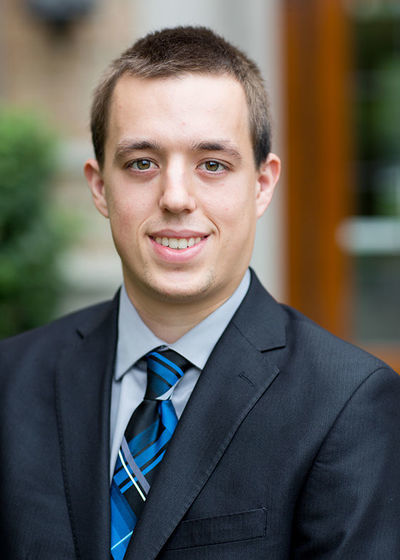Daniel Hammers is a current fellow of the Eck Institute for Global Health (EIGH). He has a BS in Biology and Chemistry from Houghton College and is currently completing his PhD in the Department of Biological Sciences at the University of Notre Dame. In this spotlight, Daniel discusses his research with the Lee Lab, what he hopes to accomplish, and why he chose the Institute.

Q. What made you interested in the EIGH graduate student fellowship?
A. I appreciate how the EIGH advocates for improving health standards for all, and particularly in resource-poor countries that are disproportionately affected by preventable diseases. This mission is especially applicable for my project, since severe GAS diseases tend to be more prevalent in these countries. Being able to perform my research in this context is very important to me.
Q. Tell us a little bit about your area of study. How and when did you first become interested in the field?
A. In the Lee lab, we study bacterial pathogenesis, or how bacteria cause disease. I first remember being interested in science during my 5th grade science class, and that interest grew throughout my time in school. I became especially interested in microbiology and infectious disease during my time at Houghton College, when I first got to work with bacteria.
Q. What are you currently working on, and what do you hope to accomplish with it?
A. I study a toxin produced by Group A Streptococcus (GAS) called Streptolysin S (SLS), with a focus on how this toxin interacts with different cell types in the human body to contribute to infection and disease. While GAS is traditionally associated with mild and self-limiting infections, such as pharyngitis (strep throat), it is also responsible for several severe and life-threatening infections, including necrotizing fasciitis (flesh-eating disease), and causes 500,000 annual deaths worldwide. The SLS toxin plays a major role in these more severe and invasive GAS infections. Previously, my lab identified a protein target for this toxin in red blood cells called Band 3. My work focuses on further exploring possible interactions between SLS and Band 3, as well as determining how SLS may interact with skin cells and other cell types to contribute to GAS infections. Given the important role that SLS plays in severe GAS infections, understanding how the bacteria use this toxin to manipulate their environment should provide insights for the development of treatments and therapeutics. Overall, I hope that my information provided by my research will contribute to better health outcomes for those impacted by severe GAS disease.
Q. What is one of your favorite classes and why?
A. I am currently finished with my coursework and am focused on research right now, but one of the most interesting classes that I took at Notre Dame was Chemical Biology with Dr. Shahriar Mobashery. I enjoyed this class because my project has important chemistry components, and being able to integrate my undergraduate training in both biology and chemistry was very helpful for how I have approached my project.
Q. Do you have any plans for the future? If so, what are they?
A. In the future, I hope to use my graduate school experience to allow me to teach and introduce other young students to research. As far as next steps, I am planning to complete my candidacy exams this summer, and then work towards my defense.
Q. Can you tell us a fun fact about yourself, or something you enjoy doing in your free time?
A. I really enjoy playing tennis, and I played through high school and college. I don’t get to play as much as I used to, but it’s a great way to get out and move!